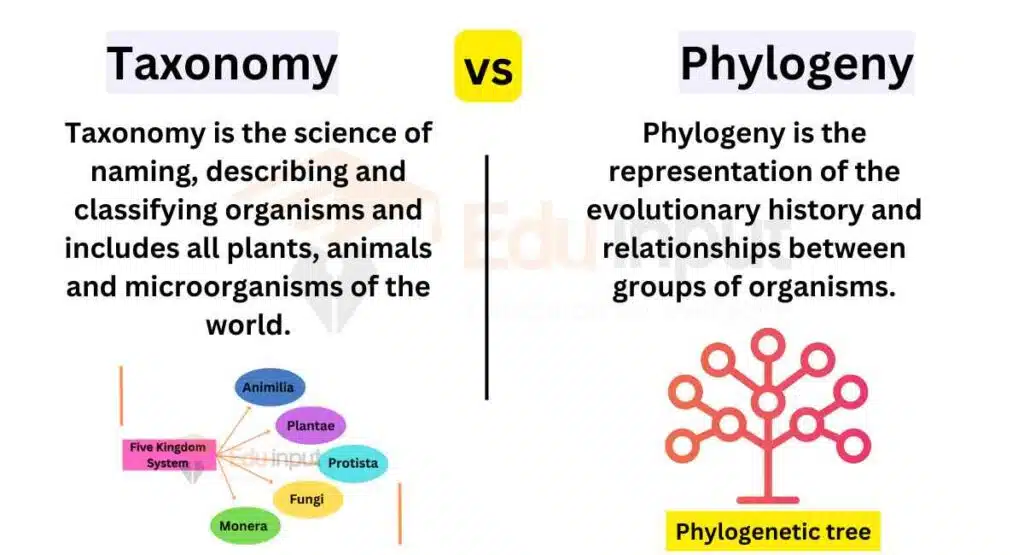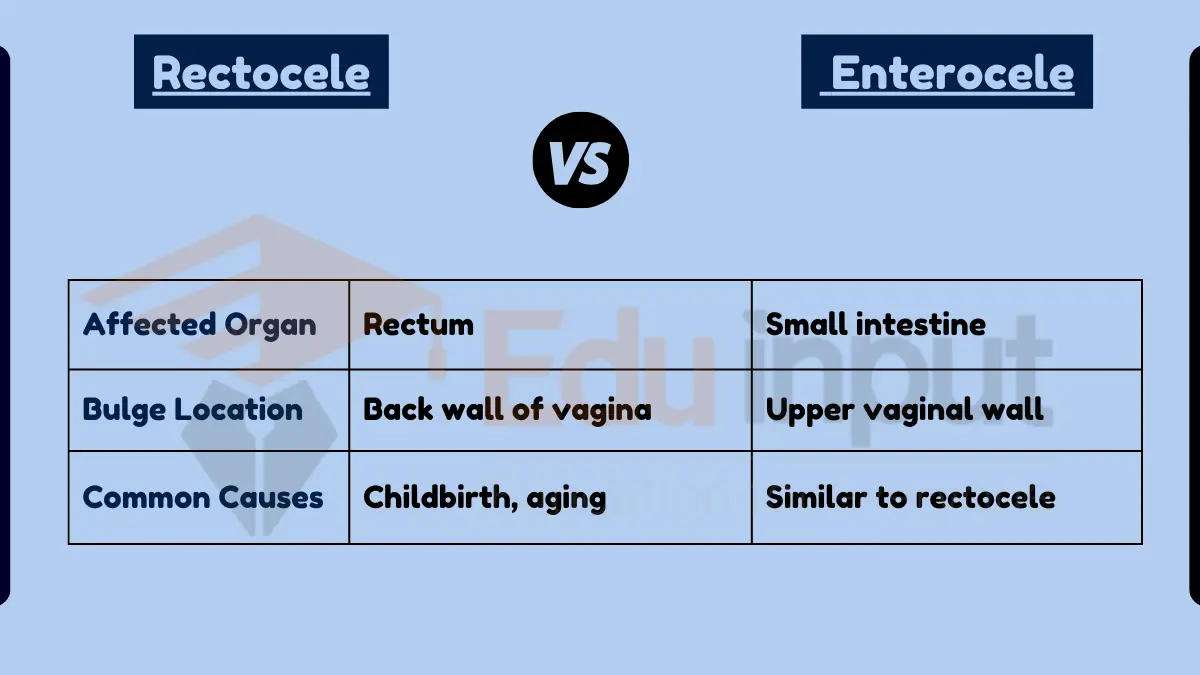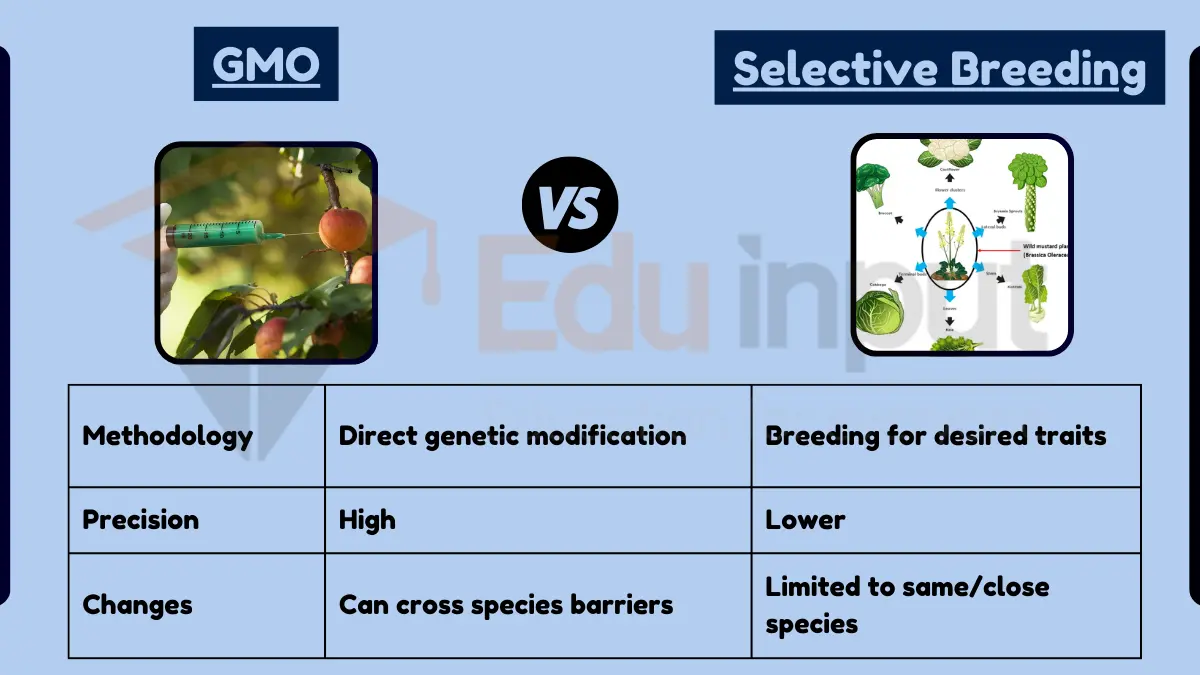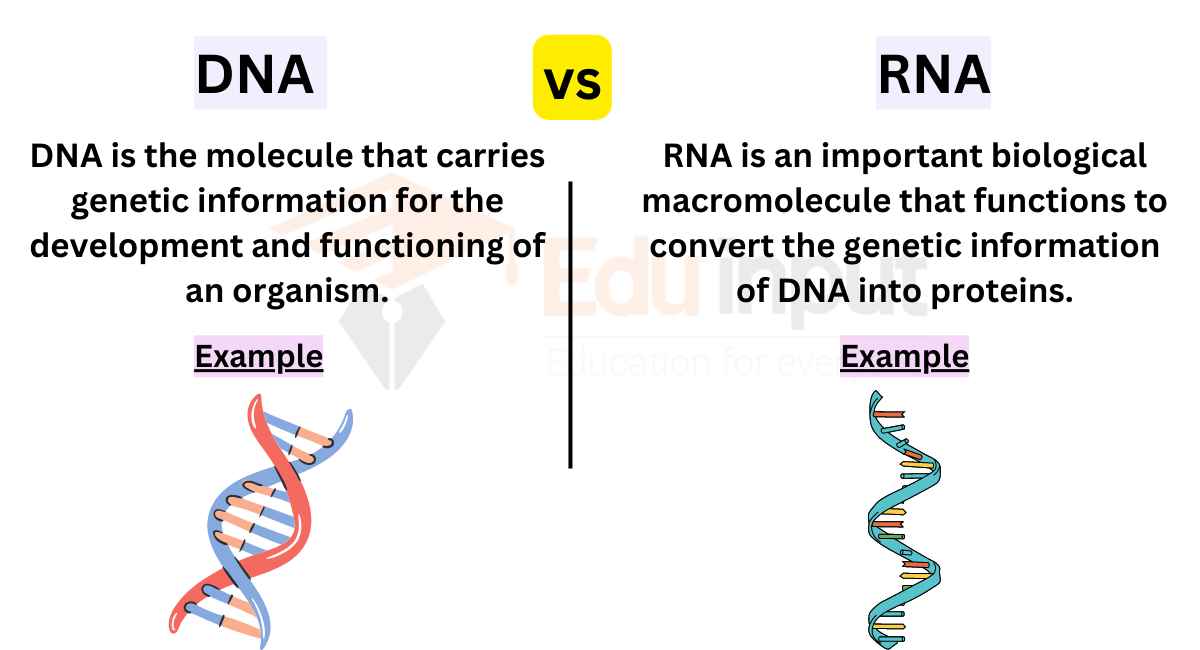Differences Between Taxonomy And Phylogeny
May 27, 2023
The main difference between taxonomy and phylogeny is that taxonomy focuses on classifying organisms based on shared characteristics, while phylogeny studies the evolutionary relationships between organisms.

Taxonomy vs. Phylogeny
Here are the main differences between taxonomy and phylogeny:
| Aspect | Taxonomy | Phylogeny |
|---|---|---|
| Definition | The science of classification and naming of organisms | The study of the evolutionary relationships between organisms |
| Focus | Organizing and categorizing organisms into hierarchical groups based on shared characteristics | Understanding the evolutionary history and relatedness of organisms |
| Purpose | Provides a systematic framework for naming, classifying, and organizing biodiversity | Reveals the evolutionary relationships and patterns of descent among organisms |
| Methods | Relies on morphological, anatomical, and genetic characteristics to group and classify organisms | Utilizes genetic and molecular data, as well as fossil records, to reconstruct evolutionary relationships |
| Taxonomic Units | Involves the classification of organisms into various taxonomic ranks (e.g., domain, kingdom, phylum, class, etc.) | Focuses on reconstructing branching patterns and evolutionary lineages |
| Hierarchical Structure | Organized into a hierarchical system with broader and narrower taxonomic categories | Represents the branching patterns of evolutionary relationships through phylogenetic trees or cladograms |
| Application | Facilitates the identification, naming, and organization of organisms for scientific and practical purposes | Provides insights into evolutionary history, species relationships, and evolutionary processes |
| Example | Classifying organisms into species, genera, families, etc. | Reconstructing the evolutionary history of mammals or determining the relationships between different bird species |
File Under:







Leave a Reply